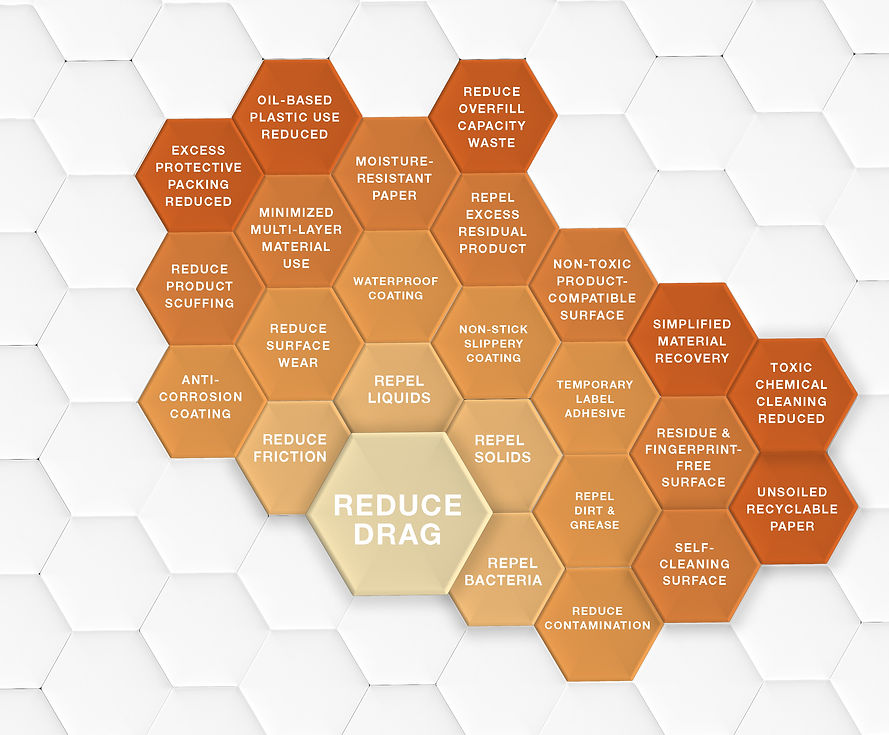
ASK EVOLUTION TO DESIGN
YOUR PACKAGING
NATURE IS YOUR R&D DEPARTMENT
Biomimicry is a problem-solving approach that references nature’s evolutionary strategies as a research and development resource. Nature designs under Earth’s operating conditions which are inherently conducive to life by using basic principles common to all organisms. These Life Principles can be identified by observing deep biological patterns across nature. Once a pattern is identified the biological strategy can be abstracted into a relevant design principle. This abstracted design principle (ADP) is extracted from an organism that has an exceptional adaptation which solves a problem. Biomimicry differs from bio-inspiration in that the solution exists within a sustainable framework.
00 / BIOMIMICRY & PACKAGING
Biomimicry can be applied to packaging across all phases of development from form to process and systems. Challenges in engineering, manufacturing, distribution, product security, and post-consumer cycles can derive innovative solutions from nature's survival strategies.
Packaging materials represent a cross-section of the development process. Biomimetic material specification can redirect many facets of a project from design concepts, sourcing, to production methods and component recyclability
DESIGN MATERIAL SPEC PATH:
/
NATURAL MATERIAL SPEC PATH:
MATERIAL FUNCTION FORM
FUNCTION FORM MATERIAL
BIOMIMICRY
THINKING
01 / DISCOVER
NATURAL MODELS
02 / ABSTRACT
BIOLOGICAL METHOD
Research an organism that performs the packaging function you need (e.g. air-tightness, color stability, moisture-sealing, drop testing). Look for an organism that has developed an exceptional adaptation for its extreme environment. For example, a lotus leaf remains unsoiled in muddy wetland conditions without expending energy.
Determine the mechanism that makes your chosen evolutionary strategy successful. Translate that strategy into an abstracted design principle without referencing biology. For example, a lotus leaf stays dry using hydrophobic wax crystals. Abstractly it's a nano-scale rough topography that successfully repels moisture and solids and bacteria.
04 / BRAINSTORM
APPLICATIONS
Use the function and packaging context to brainstorm potential applications for the project's ADP. For example a non-adhesive surface that self-cleans can be applied broadly. Coatings that prevent product buildup, permanent decorative adhesion, contamination or act as a moisture barrier use the lotus leaf strategy.
05 / INTEGRATE LIFE'S PRINCIPLES
Life designs within basic sustainable principles. They are outlined as: Evolve to Survive, Adapt to Changing Conditions, Be Locally Attuned and Responsive, Integrate Development with Growth, Be Resource Efficient, and Use Life-Friendly Chemistry. Each one has sub-principles which detail how to apply these strategies.
03 / IDENTIFY
FUNCTIONAL NEED
Identify the needs that are being met by the abstracted design principle (ADP). Consider what the ADP accomplishes and assign a general function at the project's appropriate scale. For example, the lotus leaf's ADP parallels with functions for waterproof, bacteria resistant, and self-cleaning surfaces for many non-adhesive substrate applications.
06 / EMULATE DESIGN PRINCIPLES
Develop the concept with cross-functional teams. Determine if the solution only mimics form or can further mimic a biological or ecological process. Consider the scale and context of the project with environmental effects. For example, a non-adhesive coating with a toxic by-product is not a life-sustaining packaging solution.


REPEL DIRT,
MOISTURE & BACTERIA
HYDROPHOBIC
SURFACES
04 / BRAINSTORM APPLICATIONS
Take a deep dive into brainstorming new material use with an Adapted Design Principle (ADP) using hydrophobic surfaces.
This ADP can be inspired by many evolutionary adaptations such as: dragonfly wings, snail shells, coffee bean shells, fish scales, gecko feet, shark skin, rice leaves, spider legs, duck feathers and pitcher plant leaves.
The core strategy of any hydrophobic material is to reduce surface drag. This can be achieved with a variety of techniques but commonly uses rough nano-scale topography to create a high contact angle across the surface.
INTRO/ HYDROPHOBIC SURFACES
Slippery materials have a broad range of potential applications for packaging. However most industrial, synthetic non-stick coatings have toxic properties that cannot easily pass food, pharmaceutical, and cosmetic test safety standards. Biomimicry requires the life-friendly green chemistry that creates a succession of benefits from the consumer through to the environment.
This mind-map video demonstrates how a fully abstracted biological strategy can propagate a multitude of packaging applications. Each of the applications should be vetted by Biomimicry's Life Principles to ensure that solutions meet the standards of life-sustaining conditions.
Find them here: Life's Principles
DEMO/ DEVELOPMENT PATHS



REDUCE
DRAG
UNSOILED
RECYCLABLE
PAPER